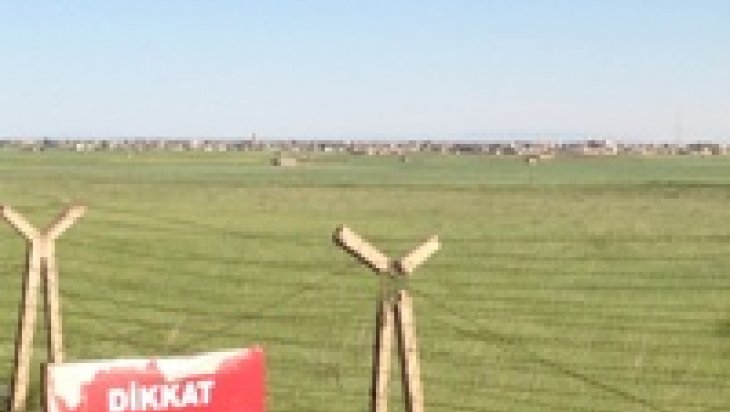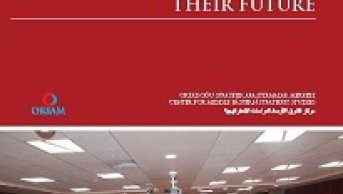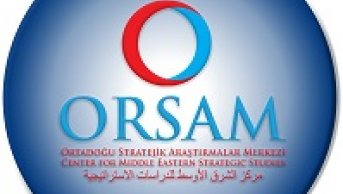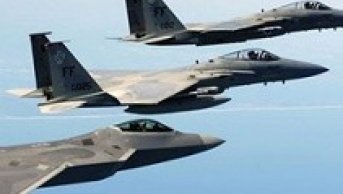Syria in Turkey: Observations from Turkey’s Border Provinces

As a Center for Middle Eastern Strategic Studies (ORSAM) team, we carried out a field study for about a week with the aim of understanding the impact on Turkey of the humanitarian dimension of developments in Syria and to see the current situation in Turkish provinces located along the Syrian border.
With that in mind, we made observations in Şırnak, Mardin, Şanlıurfa, Gaziantep, Kilis and Hatay and we talked to local residents and local authorities. We especially tried to observe the impact of the arrival of Syrian refugees on the Turkish provinces they settled in. Here, we will try to describe our observations from the border provinces.
Turkey is probably the country that has been most affected by the events in Syria. Demonstrations turned into an armed fight against the regime as a result of Syrian President Bashar al-Assad’s firm stand on protests in March 2011 when the popular uprising emerged.
Besides its political and security dimension, this unrest obliged Turkey to take precautions and responsibility in many areas, including social and economic terms. One of the most important issues at this point is that of the Syrian refugees who have been flowing into Turkey from war-torn Syria and whose numbers are increasing with each passing day.
The Prime Ministry’s Disaster and Emergency Management Directorate (AFAD) has established 14 tent cities: five in Hatay, two in Şanlıurfa, three in Gaziantep, and one each in Kahramanmaraş, Osmaniye, Adıyaman and Adana. There are also three container cities in Kilis, Şanlıurfa and Gaziantep. More container cities and tent cities are planned and are expected to be located in Şanlıurfa and Kilis.
The number of Syrian refugees who live in these temporary cities has reached 200,000; however, the people in the Turkish border provinces suggest that there might be some 300,000 more Syrians who live outside the tent cities and container cities. Turkey has an “open door” policy to those who come from Syria and the entry for Syrians at the border has been eased to a great extent.
Syrians can cross the border into Turkey by just showing their passport. There is a large crowd at the border gates where it is possible to cross the border, such as Akçakale, Cilvegözü and Öncüpınar, which are the busiest border crossings. There are 12 border gates on the Turkey-Syria border, but they are not all open because of the war. On the Syrian side of the border, the Free Syrian Army flags fly and there is almost no control of the exodus. The number of Syrians entering Turkey with their passports can reach 500 people in an hour.
The refugee flow brings with it an economic impact on border provinces, districts, towns and villages. Some even say Syrians cross the border on a daily basis to work in Turkey. This situation makes the existing unemployment problem much worse for Turkish citizens who live in the area. As the Syrians started to enter Turkey, the drop in labor wages has become an issue of complaint almost everywhere in the area.
Turkish citizens who had difficulty finding a job or worked in temporary jobs now complain about not being able to find a job at all. Employers, on the other hand, do not complain about finding lower-paid workers. Wages have allegedly dropped by almost one-fifth since the Syrians began entering Turkey. While this situation favors employers, it further increases the financial difficulty of laborers.
Market prices have also increased since the arrival of Syrians in Turkey. Locals who live in border towns and villages in particular complain about the increasing prices. It is possible to see the same price increases in other towns as well. Currently, there is a major increase in real estate rent rates. Rumor has it that it is almost impossible to find a house for rent in the border towns and any that are available are very expensive.
Most of the towns located on Turkey’s Syrian border have become construction sites and construction in Akçakale and Ceylanpınar is especially significant. Recently, landowners have been building houses to rent to Syrians. It is suggested that there are problems between many landlords and tenants because landlords want to displace their current tenants and rent their apartments out to Syrians for higher prices. It is also said that Syrians who cross the border and are concentrated in Turkey’s border districts create safety and order problems.
There are so many Syrian refugees in the border zones that sometimes you feel like you are in Syria rather than in Turkey. For example, while going from Suruç, a district of Şanlıurfa province, to Akçakale via a small road, seven out of 10 vehicles had Syrian license plates. This is a clear indicator of the number of Syrians making the crossing.
The border crossing activity has created several new enterprises and interesting situations have been observed in terms of the border trade. We saw one such case in the Akçakale border gate area of Şanlıurfa. There is a vehicle bazaar set up in an open field right next to the Akçakale border gate. In particular, luxury cars with Bulgarian and Romanian plates are sold here at almost a quarter of the usual price.
“There is no more state in Syria. You can buy cars here, take them to Aleppo in Syria and get Syrian plates for $100 and then you can drive them here in Turkey. You just have to cross the border once every six months,” said a 12- or 13-year-old child we talked to there and who said that his father was selling their car.
“Vehicles are very cheap in those countries [Bulgaria and Romania]. We buy them from those countries and we can easily sell them in Turkey at higher prices,” said another person we asked about how those vehicles are obtained from Bulgaria and Romania.
The aid provided by Turkey to Syria has also become a new source of trade. We heard that some gangs in Syria confiscate aid supplies provided by Turkey and sell them at a lower price after smuggling them back into Turkey. The authorities are working to fight all kinds of illicit trade; we were told that the day before we visited the Ceylanpınar district of Şanlıurfa, Turkish authorities stopped an attempt to smuggle 4,600 small cattle across the border.
It is also known that there are illegal border crossings from Syria, which has the longest border with Turkey among Turkey’s neighboring countries. The former “smuggler” routes along the 877-kilometer-long border are now used by Syrians seeking shelter in a safe haven (Turkey). Those who live in villages where Syrians cross into Turkey at several points on the border say it openly. Authorities strive to prevent illegal border crossings and people we talked to in the border zone say that those who entered illegally or attempted to enter Turkey illegally are often caught and deported. The number of people deported a day only at a single border gate is alleged to range between 500 and 1,000.
As a matter of fact, it can quite clearly be seen that the Turkish-Syrian border is an artificial borderline. The railroad serves as the line between the two countries. The communities, villages and towns that were united and the people who lived together during the Ottoman period are divided into two parts only by this line, however.
Locals call towns on both sides of the border by one name. For instance, the border town called Şenyurt in Kızıltepe, a district of Mardin province, is still called Dirbesiye by local residents. Dirbesiye is a settlement that is located within Syria right across from Şenyurt; however, the locals still use the original name.
As another example, the Ceylanpınar district of Şanlıurfa is called Ras al-Ayn by the locals because that was the name of the neighborhood before the borders were drawn and there are still strong ties to the other side of the border, including relatives living on the other side. Family and even tribal relations are still preserved.
In other words, in order to understand the broad social structure on the border with Syria, it would be enough to simply study Turkey’s border area, because a family or tribe on the Turkish side often has relatives on the Syrian side of the border. People coming from Syria take shelter with their relatives in Turkey. Those who want to give shelter to their relatives due to the current situation in Syria often help them find a job, as well as provide them with financial and moral support. In a sense, this situation reinforces their historic tribal and family bonds. Namely, due to the war in Syria, families in Turkey are taking a closer interest in their relatives in Syria. This strengthens relations.
However, it seems that Turkey might be negatively affected if it continues. Many of those we talked to in border towns take their relatives coming from Syria to Central Anatolia and the Black Sea region to help them find a job as seasonal agricultural workers. While we do not want to put all Syrians under suspicion, it appears that unemployment and insufficient financial opportunities might lead to social problems in Turkey.
No one has any idea of when Assad will leave power or who will replace him. What will happen in Syria if Assad leaves? What will take the place of the Assad regime? How long will it take for Syria to recover? Or will it recover at all? What will happen to the Syrians in Turkey? Those are some of the questions that confuse both the locals in the border zone and Syrians. However, to tell you the truth, Turkey and Syria are quite connected and it seems that it would be painful for them to split.











